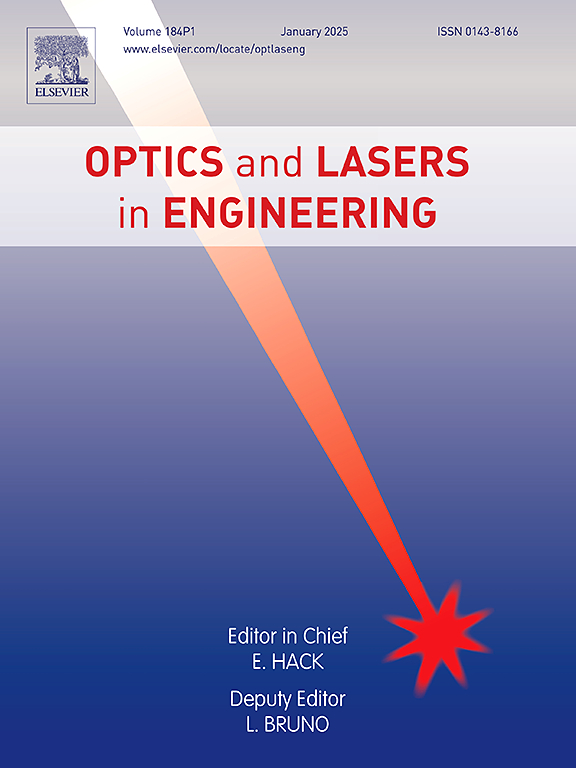杂散光激发烧蚀铝合金中金属颗粒污染物的产生
IF 3.5
2区 工程技术
Q2 OPTICS
引用次数: 0
摘要
在惯性约束聚变(ICF)装置运行过程中,杂散光对铝合金结构部件的烧蚀导致了高温、超音速金属微粒污染的激发。然而,以往的研究并没有研究金属颗粒污染物在烧蚀过程中产生的机制。采用基于相变理论的水平集方法(LSM),结合改进的Hertz-Langmuir函数,建立了三相(固液气)烧蚀模型,阐明了金属颗粒的生成机理。与考虑上述消融模型环境压力项的相同物理量相比,先前过度简化模型计算的消融区蒸发速率和羽流速度最大值被低估了~ 1380 kg m - 2 s -毒血症和~ 450 m s -毒血症。利用热损伤原理和原理验证实验,较好地将靶材的损伤范围表征为四个向烧蚀外围延伸的同心带状区域。结果表明,烧蚀过程中产生了两种典型的金属颗粒污染物。在流动重铸区和飞溅破碎区聚集的颗粒是由于熔体的滞止压力超过表面张力的部分而喷射出来的。微/纳米颗粒分布在烧蚀区是由于蒸汽羽流的凝结和微小液滴的凝固。本文的研究对于阐明杂散光激光对ICF器件容量的影响以及光学元件前驱体对激光诱导损伤阈值(LIDT)的影响具有指导意义。本文章由计算机程序翻译,如有差异,请以英文原文为准。
Generation of metal particle contaminants excited from ablated aluminum alloys by stray light
The ablation of aluminum alloy structural components by stray light during operation of the inertial confinement fusion (ICF) device results in the excitation of high-temperature, supersonic metal particulate contamination. However, previous research does not examine the mechanism by which metal particulate contaminants are generated during the ablation process. A three-phase (solid-liquid-gas) ablation model is developed employing the level set method (LSM) based on phase transition theory with improved Hertz-Langmuir functions to clarify the generation mechanism of metal particles. Comparing to the identical physical quantities considering the ambient pressure term of above ablation model, the maximum of the evaporation rate and plume velocity at the ablation zone calculated by previous oversimplified models are underestimated by ∼1380 kg m⁻2 s⁻1 and ∼450 m s⁻1. The damage extent of the target is favorably characterized into four concentric banded areas extending to the ablated periphery by accounting for the thermal damage principle with proof-of-principle experiments. It is revealed that two typical metal particulate pollutants are generated during ablation process. The aggregated particles in the flow recast zone and the splash breakup zone are ejected due to the portion of the stagnation pressure of the melt exceeding the surface tension. The micro-/nanometer particulates distributed throughout the ablation zone are attributed to condensation of the vapor plumes and solidification of minute droplets. The research in this paper provides guidance for elucidating the influence of stray light laser on the capacity of the ICF device and effect of optical components precursor on laser-induced damage threshold (LIDT).
求助全文
通过发布文献求助,成功后即可免费获取论文全文。
去求助
来源期刊

Optics and Lasers in Engineering
工程技术-光学
CiteScore
8.90
自引率
8.70%
发文量
384
审稿时长
42 days
期刊介绍:
Optics and Lasers in Engineering aims at providing an international forum for the interchange of information on the development of optical techniques and laser technology in engineering. Emphasis is placed on contributions targeted at the practical use of methods and devices, the development and enhancement of solutions and new theoretical concepts for experimental methods.
Optics and Lasers in Engineering reflects the main areas in which optical methods are being used and developed for an engineering environment. Manuscripts should offer clear evidence of novelty and significance. Papers focusing on parameter optimization or computational issues are not suitable. Similarly, papers focussed on an application rather than the optical method fall outside the journal''s scope. The scope of the journal is defined to include the following:
-Optical Metrology-
Optical Methods for 3D visualization and virtual engineering-
Optical Techniques for Microsystems-
Imaging, Microscopy and Adaptive Optics-
Computational Imaging-
Laser methods in manufacturing-
Integrated optical and photonic sensors-
Optics and Photonics in Life Science-
Hyperspectral and spectroscopic methods-
Infrared and Terahertz techniques
 求助内容:
求助内容: 应助结果提醒方式:
应助结果提醒方式:


